PETA Takes On China for Smashing Animals in Bloody Car-Crash Tests
More than 25 years ago, PETA’s intense campaign against General Motors essentially ended the automotive industry’s cruel practice of smashing live animals into walls at high speeds as part of deadly and barbaric car-crash tests. It was junk science then, and it’s junk science now.
Even so, in China—despite the existence of sophisticated animal-free models—experimenters continue to fasten abused, frightened animals into car seats and crash them into walls until their bodies are bloody, bruised, and mangled.
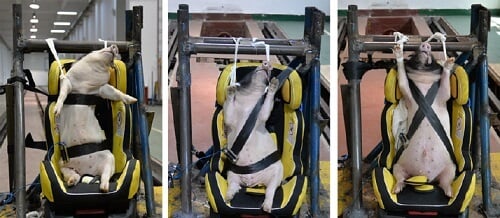
PETA contacted the nation’s Research Institute for Traffic Medicine and Daping Hospital to urge them to stop using live animals in crude car-crash tests. No regulations exist there that would require such horrific experiments to be performed.
Live pigs, dogs, and rats are pulverized in these tests, leaving them with broken bones and severe internal injuries before they’re killed and dissected.
Based on their own publications, it’s clear that China’s Research Institute for Traffic Medicine and Daping Hospital have conducted the following violent experiments:
- Experimenters strapped pigs to infant car seats attached to an accelerator that moved so fast it caused injuries to their internal organs. They were later killed and dissected.
- Experimenters used a bioimpact machine to crush the hind legs of rats, causing painful swelling and inflammation that prevented them from walking normally. Later, they killed and dissected the animals.
- Experimenters forced dogs onto an L-shaped rigid seat in a human sitting position using cloth restraints. They then affixed a disc to their heads with a steel wire rope, sewed sensors into their heads, held their heads up by the ears, dropped a hammer to hit the disc (causing their heads to thrust violently backward, resulting in whiplash, limping, and difficulty moving their hind limbs), and killed and dissected them.
- Experimenters tied live pigs to a metal sled for eight hours, depriving them of water and food, screwed a metal block into their pelvis, inserted electrodes into their abdomen, slammed them into a wall—which caused multiple fractures and severe injuries to their spine, pelvis, and internal organs—and killed and dissected them.
- Experimenters starved pigs for 24 hours, deprived them of water for six hours, strapped them into a car seat with seat belts and ropes, slammed them into a wall—which caused them to sustain severe fractures, contusions, and lacerations; caused bleeding of their internal organs; and resulted in immediate death for half the animals used—and then dissected them.
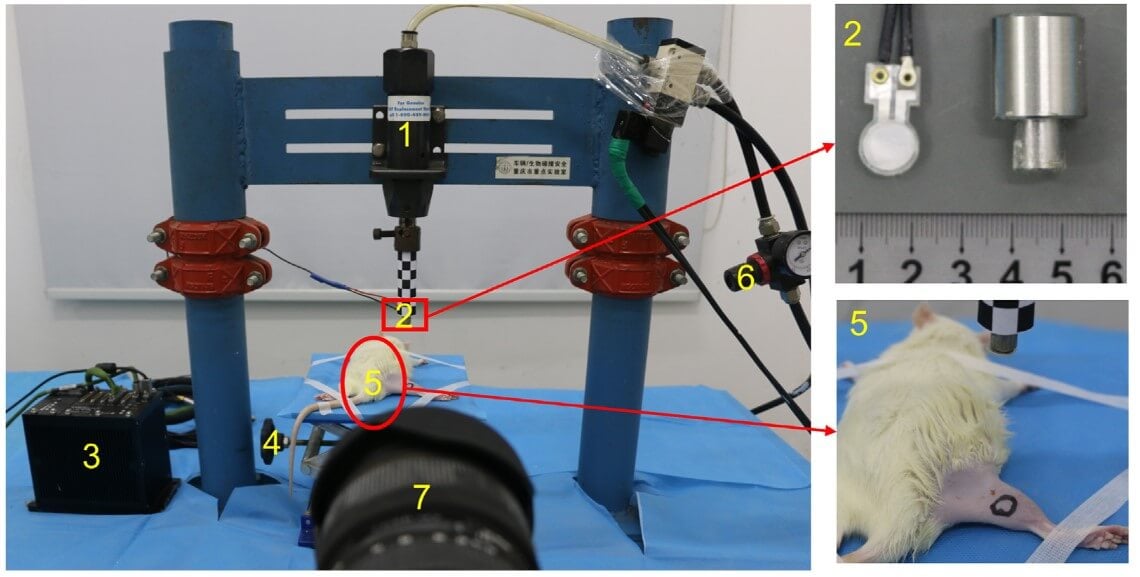
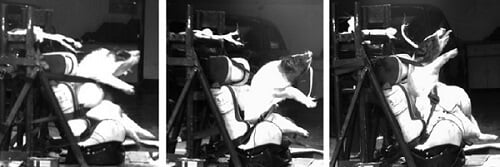
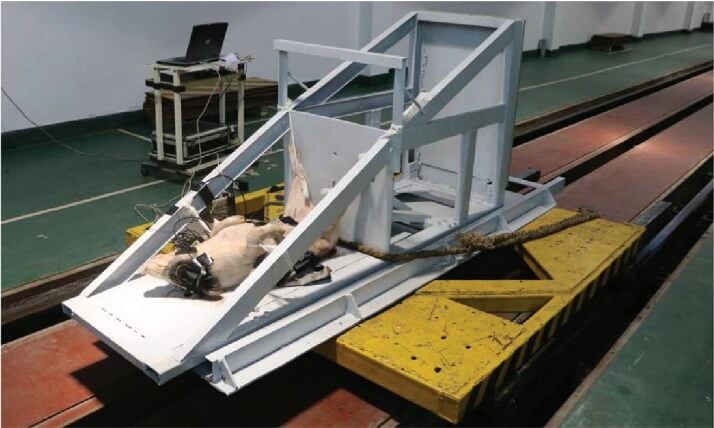
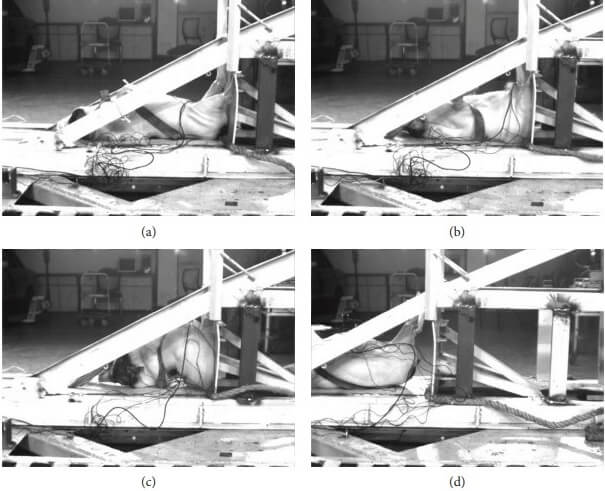
Using sentient animals in car-crash tests is cruel, archaic, and unjustifiable.
Pigs, dogs, and rats are fundamentally anatomically different from humans. Car companies figured out years ago that these kinds of experiments are worthless and tell us nothing about humans’ experiences in car crashes.
These days, companies use advanced technology—such as clinical human studies, advanced computer modeling, 3-D medical imaging, and sophisticated manikins—for their car-crash research. Other researchers have also used human cadavers and virtual reality (digital crash dummies) for the same purpose. In the 21st century, every car company on the planet should already have adopted these methods.
Help PETA Drive Out Other Cruel and Irrelevant Tests on Animals
Crash tests aren’t the only archaic tests that use pigs and other animals as stand-ins for humans. Even though human anatomy differs vastly from other species’, Oregon Health & Science University uses live pigs in its obstetrics and gynecology residency training program’s practice surgeries. Help PETA urge the school to ditch mutilating animals and switch to more effective human-patient simulators:

